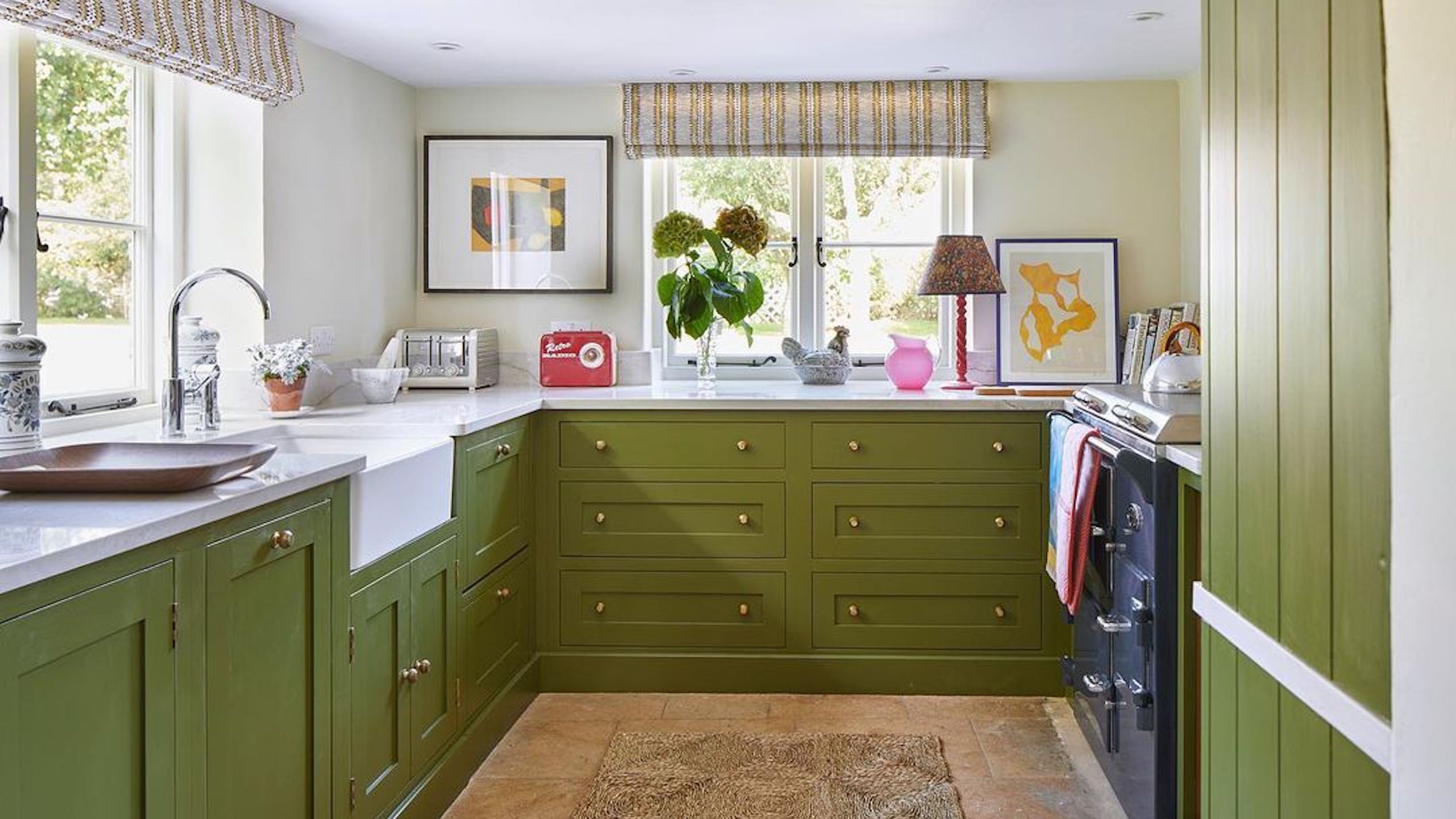
- 1. Opt for the right materials
- 2. Try hidden storage options
- 3. Choose your cabinets carefully
- 4. Avoid situating your sink in the corner
- 5. Use a rolling island
- 6. Floating shelves can do it all
- 7. Maximize vertical storage
- 8. Light it up
- 9. Get creative with hidden or multi-use products
- 10. Great design is also for renters
- Meet the experts

Don’t let spatial limitations stop you from designing a small kitchen the way you'd like. Just because you're in a small space, doesn't mean it has to feel cramped.
From utilizing multi-functional storage options to opting for the right color scheme, there are plenty of ways to make the most of your limited square footage.
Although it’s great to understand the ground rules when considering small kitchen ideas, here are ten out-of-the-box expert tips from design professionals. They gave me the best advice on how to make the most of your space when designing a small kitchen.
Expert tips for designing a small kitchen
I can't wait to give my kitchen a proper makeover. But before you get into the nitty-gritty, consider these tips for designing a small kitchen.
1. Opt for the right materials
Interiors expert, decorator, and author Bonnie Borromeo Tomlinson believes that durable options are necessary for keeping a kitchen looking clean.
“Countertops, cabinets, small appliances, flooring, should all be made of materials that are easy to clean and maintain,” she says. “The first sign of damage to fragile surfaces immediately makes a small kitchen feel unkempt and even smaller.”
2. Try hidden storage options
A small kitchen can feel even smaller when everything is on display. That’s why ample hidden user-friendly storage options are Tomlinson’s biggest tip for keeping everything in order.
Examples include “rollout caddies, like this Brightroom utility cart from Target, or drawers below the countertop, rotating shelves for corner cabinets, slim spaces assigned purposes, storage options on the insides of cabinet doors,” she says. “Every inch of space can be given a job. And by offering enough hidden storage, your surfaces will be kept clear of clutter.”
3. Choose your cabinets carefully
For Thomas Borcherding, kitchen designer at Homestar Design Remodel, maximizing your space means understanding the right placement when installing cabinets.
For those starting from scratch, analyzing where cabinets will go can open up the feel of their kitchen space. “Run cabinets to the ceiling,” he advises. “Maximize your storage space by ordering cabinetry that extends all the way to the ceiling, and finish with crown molding.”
4. Avoid situating your sink in the corner
“Nobody puts Baby in the corner” is the famous line from the movie Dirty Dancing but when it comes to your sink placement, Borcherding says, “Don’t place your sink in the corner”.
The reason? “Corner sinks waste space. Instead, place your sink parallel with your cabinetry.” Clear enough.
5. Use a rolling island
For kitchens that need more counter space but don’t feature ample space for a built-in kitchen island, a rolling kitchen island, like this Hoobro kitchen island available on Amazon, can do the trick. “You may not have space for a built-in kitchen island in a small kitchen, but you can always use a rolling kitchen island for when you need workspace,” Borcherding explains.
6. Floating shelves can do it all
If your kitchen can use more storage options, consider adding floating shelves, like these Richer House shelves available on Amazon. In fact, for kitchens without ample wall space, a great place for floating shelves might be across your window space.
“Gain valuable storage space by extending your floating shelving across any windows you may have,” Borcherding explains. It’s also a great way to add a decorating touch. “This offers a great spot for indoor plants, as well as kitchen accessories.”
7. Maximize vertical storage
Rachel Waldron, an interior designer and founding partner at Waldron Designs, believes finding more space in your kitchen means going vertical.
“Think upwards,” Waldron exclaims. “Install rental-friendly shelves or cabinets that reach the ceiling to make the most of vertical space. It not only adds storage but draws the eye upward, making the room feel more spacious.”
8. Light it up
Another tip from Waldron is to focus on brightening up your kitchen by using natural or artificial lighting.
“Good lighting can do wonders in a small kitchen,” she advises. “Consider under cabinet lighting to brighten up workspaces, and go for light, reflective colors to enhance natural light and create a more open feel.”
9. Get creative with hidden or multi-use products
Opting for furniture and storage options that serve multiple purposes is imperative to save space.
Walrdon’s examples include “kitchen island with storage underneath or foldable tables that provide extra workspace when needed and tuck away when not in use,” she says.
10. Great design is also for renters
Even if you’re renting your space and are limited on the design decisions you can make in your kitchen, a redesign is possible with a few different elements, according to Waldron.
“For renters or those not looking for a permanent overhaul, think portable,” she advises. “Portable kitchen islands, storage carts, and removable wallpaper can add personality without making a lasting mark.”
Meet the experts

Bonnie Borromeo Tomlinson is an interior decorator, book author, and professional organizer.
Thomas Borcherding is a kitchen designer at Homestar Design Remodel.

Rachel Waldron is an interior architectural designer and founding partner at Waldron Designs. She has an accredited degree in Interior Design and an MBA with a specialization in Marketing.
Lacking in square footage? Don’t fret. With these expert tips and small kitchen must-haves, you can create the kitchen of your dreams, even in the smallest of spaces.
Join our newsletter
Get small space home decor ideas, celeb inspiration, DIY tips and more, straight to your inbox!

Hello! I’m Kate Santos, a writer and photographer based in Los Angeles. In the design world, I got my start working as an Editorial Intern for Dwell magazine in San Francisco. Since then, I’ve written about design and architecture in many national magazines and online publications, including Playboy, Hunker, and The Culture Trip.
I grew up in a very old house in North Carolina and am still influenced by the rustic, charming, antique and aged elements of a home. Sustainability and longevity is extremely important to me and I believe learning to reuse materials or purchasing items you’ll love forever goes a long way. I also lean towards the Japanese philosophy of wabi-sabi when designing my own home, embracing the perfectly imperfect items I can find.